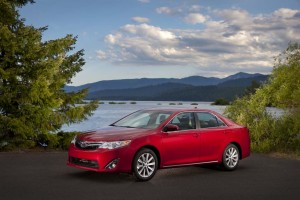“We’re changing who we are,” proclaimed Toyota Senior Vice President Bob Carter during an industry conference in New York.
That might seem an odd and risky strategy for a company that has been operating at the top of its game for most of the past few decades – with only a few uncomfortable setbacks like its unintended acceleration crisis of 2009 and 2010. But despite growth that’s outpacing the overall industry recovery, Carter said Toyota can’t simply expect to maintain its growth by doing business as usual, even if the maker is “back on the top of our game.”
There’s no question 2012 is turning into a good year for the giant maker. Sales are up 30% for the first seven months and while July’s numbers were “only” up 27% that positioned Toyota as the market’s number one brand in terms of retail sales.
During a speech to today’s J.P. Morgan Auto Conference, Carter, Toyota’s Vice President of Automotive Operations, acknowledged that the Japanese maker has picked up sales from loyalists who waited on the sidelines last year due to product shortages caused by Japan’s March 2011 earthquake and tsunami. “But it would be a mistake,” the Toyota veteran insisted to think that “was the only reason for our growth as a brand” this year.
If anything, the maker has been gaining momentum from recent new car launches, notably including the latest-generation Camry sedan. It has picked up 39% for the calendar-year-to-date and now holds a 60,000-unit lead over its closest rival, the Honda Accord, Carter noted.
Meanwhile, with the addition of several new models, including the big V, compact C and a first-ever plug-in, the Prius “family” now accounts for 43% of total U.S. hybrid sales.
While that might be enough for many companies to want to rest on its laurels, Toyota is well aware of the increasing competition it faces, Carter said. The Camry is being challenged by next-gen models of the Honda Accord, Ford Fusion and a new version of the Altima, for example, Nissan CEO Carlos Ghosn proclaiming plans to become the best-seller in the midsize segment.
And while the three Toyota brands – including Lexus and Scion – may continue to top the quality and reliability charts, Carter acknowledged that is becoming less of a differentiator as quality improves across the industry.
Meanwhile, traditional selling points, such as performance, are becoming less important to the next generation of young car buyers, who are more focused on functionality and advanced technology.
Toyota Motor Co. CEO Akio Toyoda has underscored the need to change his company’s focus, putting more of a premium on “passion,” emphasizing more emotional design and making Toyota’s products more fun-to-drive.
Toyota products will clearly be put to the test in the months to come. The maker is in the midst of launching 19 new or significantly updated products that will represent nearly half of Toyota, Scion and Lexus volume in the U.S. These include not only high-volume models like the Camry and the upcoming Avalon sedan but the Lexus flagship, the LS 460, the sporty Scion FR-S and the new Toyota RAV4-EV, the maker’s first battery-electric model in two decades.
Though Toyota has a reputation as an environmental leader – and has been a force to be reckoned with in the hybrid segment – it has been reluctant to put much focus on lithium-based technology. The RAV4-EV is more of a toe in the water, with Toyota planning to sell only 2,600 over the next three years.
(For a first review of the 2012 Toyota RAV4-EV, Click Here.)
“Electric vehicles have been getting some negative press lately,” Carter told the J.P. Morgan conference, “but we do believe they have a role in our vehicle portfolio. But we believe that role will be minimal until the industry can address the problems of battery cost and range.”
For the near to mid-term, Carter concluded, hybrids are likely to remain the dominant form of alternative power on the market.

